Understanding the 1k Resistor: Applications, Color Codes, and More
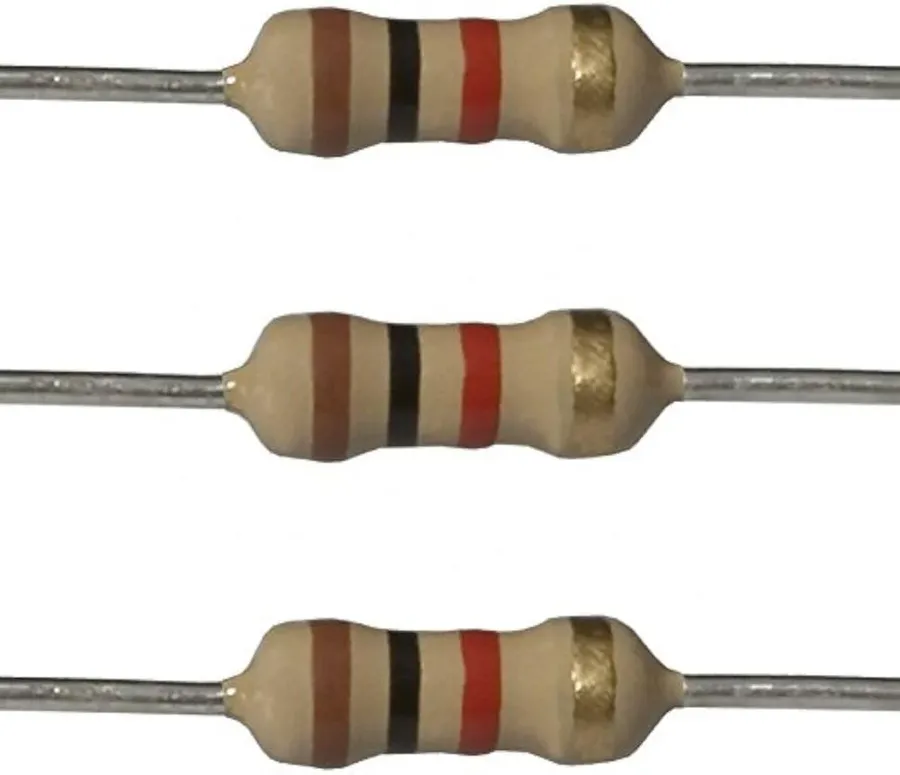
The humble 1k resistor, a ubiquitous component in electronics, plays a critical role in countless circuits, much like the foundation of a building. This seemingly simple component is essential for limiting current, dividing voltage, and ensuring electronic devices function correctly. Think of it like the pressure valve in a water system, carefully controlling the flow. This article will explore the specifics of the 1k resistor, its color code, common applications, and how it affects electronic circuits, making it an essential guide for anyone working with or learning about electronics.
What is a 1k Resistor?

A 1k resistor, fundamentally, is a passive electronic component exhibiting a fixed resistance of 1000 ohms (1 kiloohm). Its primary function within a circuit is to impede the flow of electrical current, thereby enabling precise control over current magnitudes and voltage drops. This ability to regulate electrical parameters is indispensable across diverse electronic applications, from simple circuits to complex integrated systems.
The '1k' designation signifies 1000 ohms, as 'k' is the standard abbreviation for kilo, representing a factor of 1000 in the SI system. The utility of a 1k resistor stems from its balanced resistance value which is neither too high nor too low for many practical electronic circuits, it is therefore a common choice in numerous circuit designs.
1k Resistor Color Code Explained
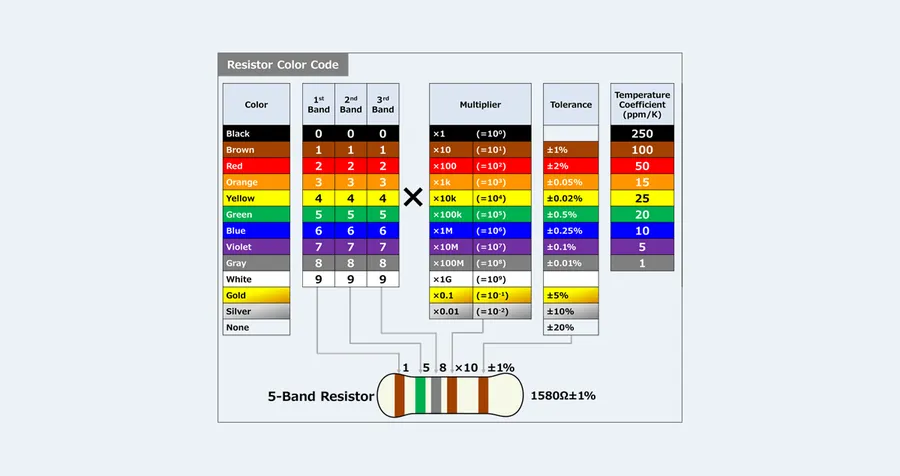
The color code on a 1k ohm resistor is a standardized system that allows for easy identification of its resistance value, tolerance, and sometimes its temperature coefficient. For a 1kΩ resistor, the bands are typically brown, black, red, and gold. This system is crucial because the small size of most resistors makes directly printing the value impractical; instead, the colored bands provide a quick and universal identification method.
| Band | Color | Digit/Multiplier/Tolerance |
|---|---|---|
| 1st Band | Brown | 1 |
| 2nd Band | Black | 0 |
| 3rd Band | Red | Multiplier of 10^2 |
| 4th Band | Gold | ±5% Tolerance |
Reading the color bands from left to right: The first two bands represent the significant digits of the resistance value. The third band indicates the multiplier (power of 10) by which these digits should be multiplied. The fourth band specifies the tolerance of the resistor's stated value. Therefore, a 1k ohm resistor with a gold tolerance band means it's actual value is within 5% of 1000 ohms. This translates to a range between 950 ohms and 1050 ohms.
Common Applications of 1k Resistors
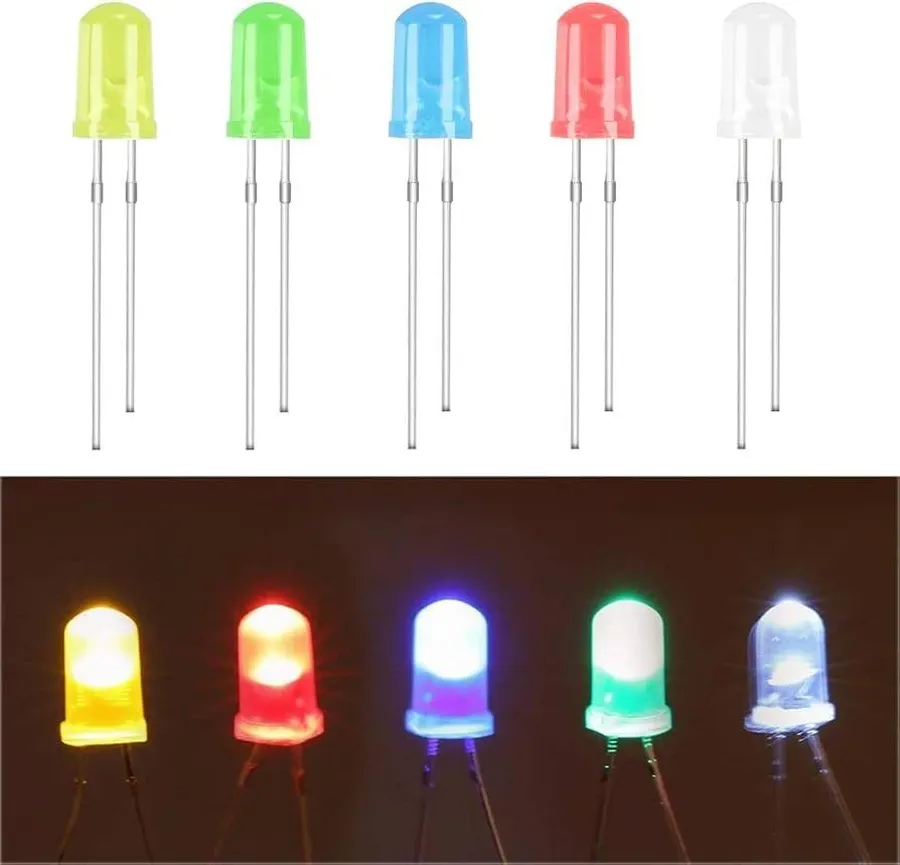
1k resistors are ubiquitous components in electronics, serving a multitude of purposes from basic current limiting to more complex circuit functions. Their precise 1000-ohm resistance makes them a versatile choice in numerous applications.
- LED Current Limiting
A primary application of 1k resistors is in series with LEDs to limit current. Without a current-limiting resistor, an LED would draw excessive current, potentially causing damage or premature failure. The 1k resistor helps to maintain the LED's forward current within its safe operating range. - Pull-Up and Pull-Down Resistors
In digital circuits, 1k resistors are frequently employed as pull-up or pull-down resistors. They ensure that a digital input pin has a defined logic state when no signal is present, preventing floating inputs that can lead to erratic circuit behavior. This is crucial in microcontroller applications. - Voltage Dividers
1k resistors can be used in voltage divider circuits to scale down a voltage to a specific level required by a load or sensor. By combining the 1k resistor with other resistors, a desired voltage drop can be achieved for use in analog circuitry or to protect sensitive components. - Sensor Interfacing
Many sensors, particularly those that produce an analog output, often require a resistor to interface with a control circuit such as a microcontroller. The 1k resistor can form part of this interface, ensuring correct impedance matching and signal conditioning. For example, in light sensor circuits and temperature circuits a 1k resistor can be part of the interface. - Signal Conditioning
1k resistors are used in many signal conditioning circuits as a component of filters, attenuators or as a bias resistor. Their stability and precision make them suitable to ensure accurate signal processing and transmission in various applications. - Basic Circuit Prototyping
The 1k resistor is a common component for prototyping and experimenting due to its broad range of applications. It can be used to test new circuit designs on a breadboard. It's versatility and common use in educational and experimental electronics makes it ideal for quick and effective testing.
1k Resistor in LED Circuits: Calculating Current
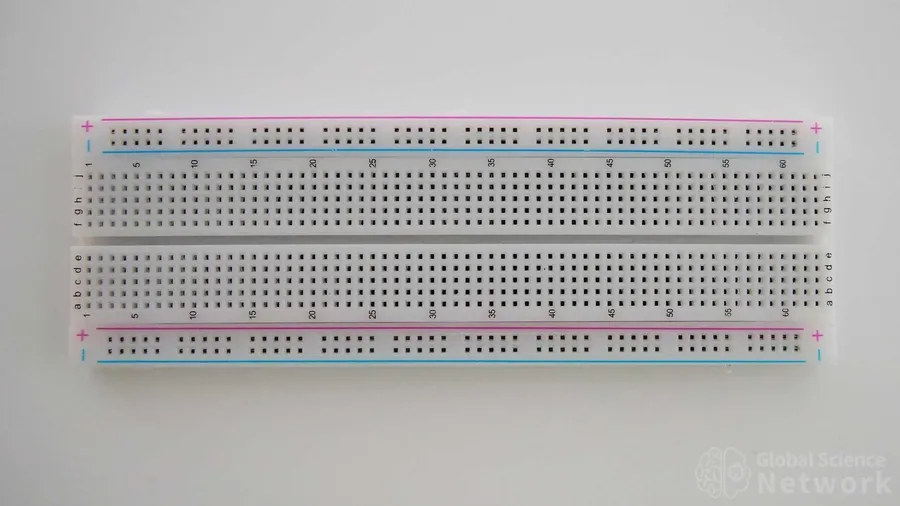
Utilizing a 1k resistor in LED circuits is crucial for current limitation, preventing overcurrent that can damage the LED and ensuring optimal performance. By carefully calculating the required resistance, one can effectively control the LED's brightness and extend its lifespan.
The core principle involves Ohm's Law: V = IR, where V is voltage, I is current, and R is resistance. In an LED circuit, we aim to determine the appropriate series resistance to limit the current flowing through the LED.
To calculate the necessary resistance for an LED circuit, we must consider the voltage source (Vs), the LED's forward voltage drop (Vf), and the desired forward current (If). The formula used is R = (Vs - Vf) / If. For example, if a 5V source is used with an LED that has a 2V forward voltage drop and requires 20mA (0.02A) of current, the required series resistance is R = (5V - 2V) / 0.02A = 150 ohms. A 1k resistor, provides significant current limitation, typically below the LED's maximum current rating. However, this may result in lower brightness
| Parameter | Description | Example Values |
|---|---|---|
| Vs | Voltage Source | 5V, 9V, 12V |
| Vf | LED Forward Voltage Drop | 1.8V - 3.3V (Depending on LED Color) |
| If | LED Forward Current | 10mA - 30mA (Typical for many LEDs) |
| R | Calculated Series Resistance | Calculated using R = (Vs - Vf) / If |
It is important to note that LEDs vary in their forward voltage and current requirements. Always consult the LED's datasheet for accurate specifications. Using a 1k resistor provides a good starting point for testing but may need to be adjusted to optimize the LED's brightness and lifespan.
1k Resistors in Series and Parallel
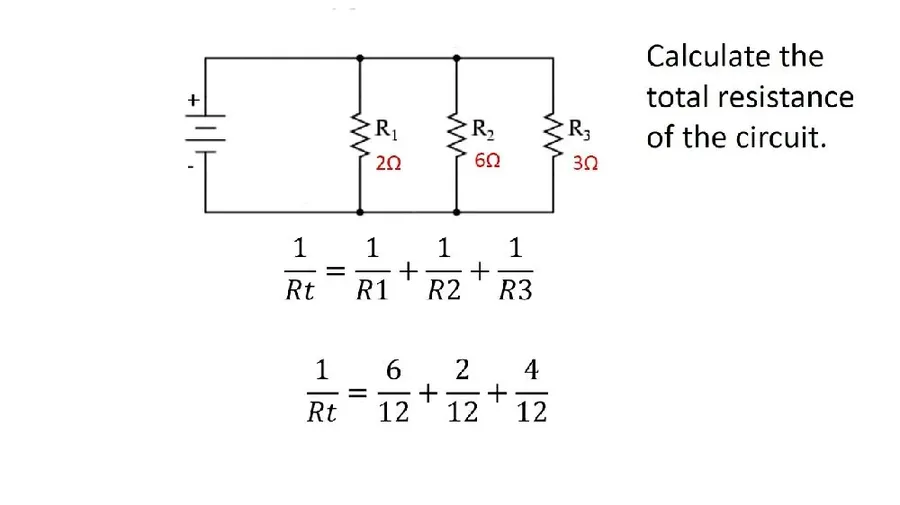
Understanding how 1k resistors behave in series and parallel configurations is fundamental to circuit design. The total resistance of a circuit changes depending on whether resistors are arranged in series, where the current flows sequentially through each component, or in parallel, where the current splits between multiple paths. These configurations are chosen based on specific circuit needs, providing flexibility in current and voltage control.
| Configuration | Description | Total Resistance Calculation for 1k Resistors | Typical Use Cases |
|---|---|---|---|
| Series | Resistors are connected end-to-end, forming a single path for current flow. | R_total = R1 + R2 + ... + Rn, For two 1k resistors: R_total = 1kΩ + 1kΩ = 2kΩ | Increasing total resistance, decreasing current flow, voltage division. |
| Parallel | Resistors are connected side-by-side, creating multiple paths for current flow. | 1/R_total = 1/R1 + 1/R2 + ... + 1/Rn, For two 1k resistors: 1/R_total = 1/1kΩ + 1/1kΩ = 2/1kΩ, R_total = 500Ω | Decreasing total resistance, increasing current flow, constant voltage. |
The choice between series and parallel configurations depends entirely on the requirements of the circuit. Series configurations are suitable when a higher overall resistance is needed, or when splitting a voltage. Parallel configurations are used to reduce total resistance and to distribute current across multiple paths, such as powering multiple LEDs in parallel from the same voltage source.
Frequently Asked Questions About 1k Resistors
This section addresses common queries regarding 1k resistors, providing clear and concise answers to help users better understand their properties and applications.
- What does '1k' signify in relation to a resistor?
In the context of resistors, '1k' denotes a resistance value of 1000 ohms. The 'k' is a metric prefix representing 'kilo,' which means one thousand. Thus, a 1k resistor has a resistance of 1000 ohms. - What are the color bands on a 1k resistor and what do they mean?
A standard 1k ohm resistor typically has four color bands. These are: Brown (1), Black (0), Red (2), and Gold (5% tolerance). These bands are read from left to right. The first two bands represent the first two digits of the resistance value, and the third band is the multiplier (10 to the power of 2). The gold band represents the tolerance of the resistor. Therefore, the 1K resistor color code is Brown, Black, Red and Gold. - How can I use a multimeter to verify the resistance of a 1k resistor?
To measure a 1k resistor with a multimeter, set the multimeter to measure resistance (Ohms, Ω). Connect the multimeter probes to each end of the resistor. The multimeter should display a value close to 1000 ohms. Given the manufacturing tolerance, the value may vary slightly. If the measured value is significantly different, the resistor may be damaged or out of tolerance. - Is a 1k resistor suitable for use with an LED?
Yes, a 1k resistor can be used with an LED, but its suitability depends on the specific LED's forward voltage and current requirements and the supply voltage. A 1k resistor might be appropriate for limiting current in an LED circuit if it is matched to your specific setup. A series resistor is used to avoid burning out the LED by excess current and 1k may or may not be the most suitable value for your application. - Can I use a 1k resistor in circuits other than LED circuits?
Absolutely. 1k resistors are versatile and widely used in numerous electronic circuits beyond LED applications. They are commonly found in pull-up/pull-down circuits, voltage dividers, and current limiting applications in various digital and analog circuits. Their primary function is to control current flow and voltage levels within circuits. - What does the tolerance band on a 1k resistor indicate?
The tolerance band specifies the acceptable range of variation from the nominal resistance value. A gold band typically indicates a ±5% tolerance, meaning that a 1k resistor with a gold tolerance band can have a resistance value that is 5% higher or lower than 1000 ohms. For instance a 5% tolerance 1k resistor could have a value of between 950 Ohms and 1050 Ohms. - Are 1k resistors available in different power ratings?
Yes, 1k resistors come in various power ratings, such as 1/8W, 1/4W, 1/2W, and 1W. The power rating indicates the maximum power a resistor can safely dissipate without damage. Selecting the correct power rating for your application is crucial to prevent overheating and failure.
Types of 1k Resistors: Metal Film, Carbon Film, and SMD
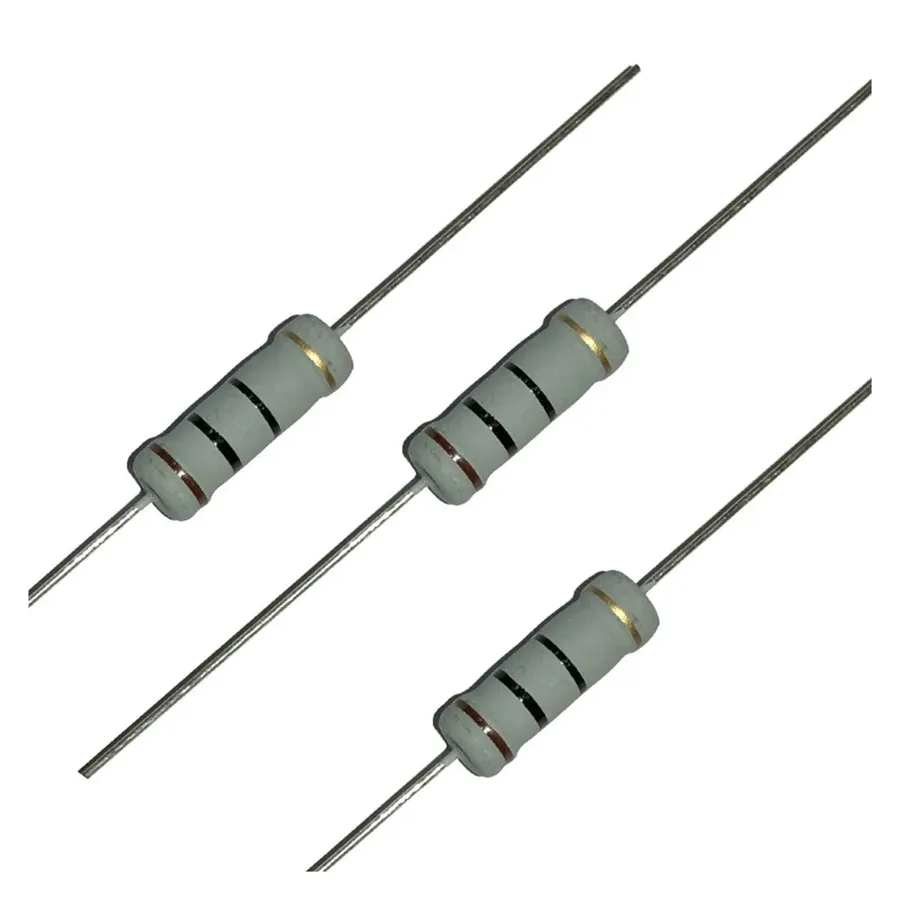
1k resistors are available in several construction types, each offering distinct characteristics that make them suitable for various applications. The primary types are metal film, carbon film, and surface mount devices (SMD). Understanding the differences between these types is crucial for selecting the optimal resistor for a specific design.
| Feature | Metal Film | Carbon Film | SMD |
|---|---|---|---|
| Resistance Tolerance | Typically ±1% or less | Typically ±5% or ±10% | Typically ±1% or less |
| Temperature Coefficient | Lower, more stable | Higher, less stable | Lower, more stable |
| Noise | Lower | Higher | Lower |
| Power Rating | Good | Moderate | Varies by size |
| Size | Axial leads | Axial leads | Small, surface mount |
| Cost | Moderate to High | Low | Moderate |
| Typical Applications | Precision circuits, audio equipment | General purpose applications | High-density PCBs, consumer electronics |
Troubleshooting and Testing 1k Resistors
Verifying the integrity of a 1k resistor is crucial in electronics, and a multimeter is the primary tool for this task. This section details how to accurately measure resistance and identify common issues with 1k resistors.
Before testing, it's essential to understand that a resistor's stated value is nominal, and its actual value may vary within a certain tolerance (e.g., ±1%, ±5%, ±10%). Typically, the color code on a 1k resistor indicates a 1000 ohm value with a certain degree of tolerance and a temperature coefficient of resistance, these deviations should be considered normal, but if you obtain readings which fall well outside of what is specified on the component, you may have a faulty component.
- Preparing the Multimeter
Set your multimeter to the Ohms (Ω) mode, choosing a range that is appropriate for measuring 1000 ohms. Often, a 2kΩ or 10kΩ range is suitable. Most digital multimeters can auto-range, in which case you will be fine, but if using an analogue multimeter, take care in selection of an appropriate range. - Connecting the Test Leads
Connect the multimeter's test leads to the resistor's terminals, ensuring good contact. Ensure that the resistor is not connected in-circuit when measuring resistance, as other components will influence your measurement and invalidate it. - Reading the Measurement
Observe the multimeter's display. For a 1k resistor, you should see a reading close to 1000 ohms (1kΩ) within the tolerance. For a 5% tolerance 1k resistor, you might see readings between 950 ohms to 1050 ohms. - Interpreting the Results
A reading significantly outside the expected range (e.g., a much higher resistance or an open circuit) indicates a faulty resistor that requires replacement. A measurement of significantly less than 1k ohm indicates a failed component which is often short circuit and requires replacement. Be sure to check the measurement of new and replacement components. - Common Faults
Common failures in a resistor are typically open circuit or increased resistance due to overheating, current overload, or mechanical stress. In certain circumstances the resistance may decrease, this is more likely on the more uncommon wire wound or precision components, and more often than not these are due to some form of external mechanical damage.
When troubleshooting circuits, suspect resistors if components exhibit abnormal behavior, and replace components as required. Always use an appropriate replacement with the correct tolerance and power rating.
Buying Considerations for 1k Resistors

Selecting the appropriate 1k resistor involves several crucial factors beyond just the resistance value. These considerations ensure the resistor performs as intended within the circuit, maintains reliability, and fits the physical design constraints.
- Tolerance
The tolerance of a resistor specifies the allowable variation from its nominal resistance value (1kΩ in this case). Common tolerances include ±1%, ±5%, and ±10%. For precision applications, tighter tolerance resistors are essential, while for less critical circuits, wider tolerance resistors are more economical. The choice of tolerance level directly affects the accuracy of circuit operation. - Power Rating
The power rating specifies the maximum power a resistor can dissipate as heat without damage. Common power ratings include 1/8W, 1/4W, 1/2W, and 1W. Selecting a resistor with a power rating that exceeds the expected power dissipation in the circuit is crucial to avoid overheating and potential component failure. This parameter depends on voltage and current within the application. - Lead Type (Axial vs. SMD)
Resistors are available in two primary lead configurations: axial and surface mount (SMD). Axial resistors have leads extending from either end and are typically used in through-hole circuit boards, common in prototyping and DIY projects. SMD resistors are smaller, lack leads, and are designed for surface mounting to printed circuit boards (PCBs). SMD components are typically used for mass production and high-density designs. - Physical Size and Package
The physical size of the resistor can be important depending on the spatial constraints of a circuit or PCB design. The package type of SMD resistors, including 0402, 0603, and 0805, among others, has its own physical dimensions to be considered as these also influence maximum power handling capabilities. Always confirm the physical size requirements of the component before making a purchase. - Temperature Coefficient
Resistor value changes with temperature. The temperature coefficient, expressed in ppm/°C, indicates how much the resistance will change per degree Celsius. For precision applications where temperature variation can affect circuit performance, it's important to consider a low coefficient of temperature. - Where to Buy
1k resistors are widely available from electronic component distributors, both online and in physical stores. When buying, it is very important to ensure that the source is reliable and that the components comply with the stated specifications. Major distributors, such as Digi-Key, Mouser, and Arrow, offer a wide selection and provide datasheets for each product. For smaller quantities and more casual use, platforms like Amazon, eBay, or specialty hobby electronics suppliers can be considered.
The 1k resistor may seem like a minor detail in the vast world of electronics, but its role is crucial to the stability and functionality of so many devices. From powering simple LED circuits to ensuring precision in sophisticated circuits, the 1k resistor stands as a vital and foundational component. Understanding its characteristics, color code, and proper application allows both electronics hobbyists and professionals to utilize it effectively, ensuring that our technology works reliably for years to come. Whether you are building a simple circuit or designing a complex electronic system, the 1k resistor is a fundamental building block that enables innovation and progress in technology.
 AnyPCBA
AnyPCBA